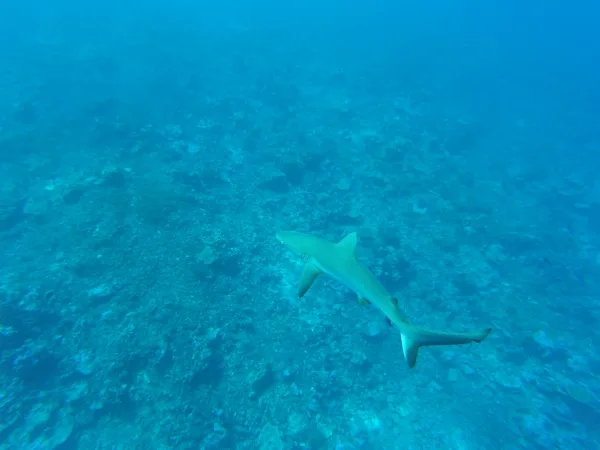Programs Blog
My First Impressions of Orona

Cole Rader, The University of British Columbia, B watch
Ship’s Log
Current Position
4 degrees, 30.87 minutes South x 172 degrees, 16.65 minutes West
Ship’s Heading and Speed
Anchored offshore of Orona
Sail Plan
Exploring Orona atoll
Weather
Clear skies
As I walk up onto the quarter deck of the ship, the first thing I notice is the raucous clamoring of seabirds. I step into bright sunlight and see Orona off the starboard bow. The azure water crashes in foaming waves over the outer reef a short 50 meters from our anchorage. Just past the reef, the water lightens to a pale turquoise as beautiful white sand replaces the coral. The beach slopes gently out of the water, the sand shimmering in the heat. The fine white sand stretches up the shore to meet a verdant line of foliage. Past the initial bushes, palm trees rise up framed by the clear blue sky. To complete the picturesque island paradise, hundreds of seabirds soar and wheel over the tropical canopy. The boldest birds swing out past our ship, diving low over the water and kicking up spray.
 Orona Reef
Orona Reef
Looking at the atoll it is easy to imagine that humans have never set foot on this remote sanctuary, yet we have learned of multiple settlement attempts. These attempts were made for the most part to harvest the bounty of this wondrous place, from the coconuts to the fish. Each attempt has failed due to a lack of freshwater and now the atoll remains uninhabited. Supposedly some remnants of the settlements remain, which we should see tomorrow on our trips to shore, but likely even those will be reduced to nothing before long if Kanton is any indication. There we saw structures that the builders probably thought would last for centuries, like concrete and rebar bunkers, as well as large steel tanks all crumbling to dust after only decades unattended. On these atolls we have all witnessed the nigh unstoppable force of nature.
The first snorkelers have returned from the reef, telling stories of the majesty of the coral gardens teeming with multihued fish and small reef sharks. I feel tremendously lucky to experience this place first hand. I am awed thinking about the sheer amount of time these atolls have been forming. The idea of a mountain rising from the sea and then being drawn back under the waves is mind boggling. The years of coral it took to form these atolls is made clear by the mass of coral debris on the sea floor, the beaches and particularly in places where water has eroded walls revealing the layers of packed coral skeletons and sand forming the land of the islands. What is truly worrying among all this wonder, is that these atolls that have been forming since long before any of us were born, may well be gone, completely submerged, by the end of our lives. Being out here and seeing the things we have seen has absolutely reinforced for me the enormity of the change we have caused to the planet in the past 50 years. Last summer I dived in Hawaii and even there relatively nearby the reefs were not nearly as healthy or as beautiful as what I have seen here in the Phoenix Islands. I believe that unless we come together collectively and make changes to the ways we are impacting the environment, the things we are all seeing out here on this trip could easily be lost forever, and that would truly be a shame.
To my family, I love you all and I’ll see you soon with lots of exciting pictures and stories!
– Cole Rader, The University of British Columbia, B watch
Recent Posts from the Ships
- Ocean Classroom 2024-A collaborative high school program with Proctor Academy
- Collaborations and Long-term Commitments: SEA’s Caribbean Reef Program Sets a Course for Coastal Programs that Compliment Shipboard Experiences.
- Sea Education Association students prepare for life underway using state of the art nautical simulation from Wartsila Corporation.
- SEA Writer 2022, Magazines From the Summer SEA Quest Students
- Technology@SEA: Upgrades Allow Insight into Ocean Depths
Programs
- Gap Year
- Ocean Exploration
- High School
- Science at SEA
- SEA Expedition
- SEAScape
- Pre-College
- Proctor Ocean Classroom
- Protecting the Phoenix Islands
- SPICE
- Stanford@SEA
- Undergraduate
- Climate and Society
- Climate Change and Coastal Resilience
- Coral Reef Conservation
- Marine Biodiversity and Conservation
- MBL
- Ocean Exploration: Plastics
- Ocean Policy: Marine Protected Areas
- Oceans and Climate
- Pacific Reef Expedition
- The Global Ocean: Hawai'i
- The Global Ocean: New Zealand